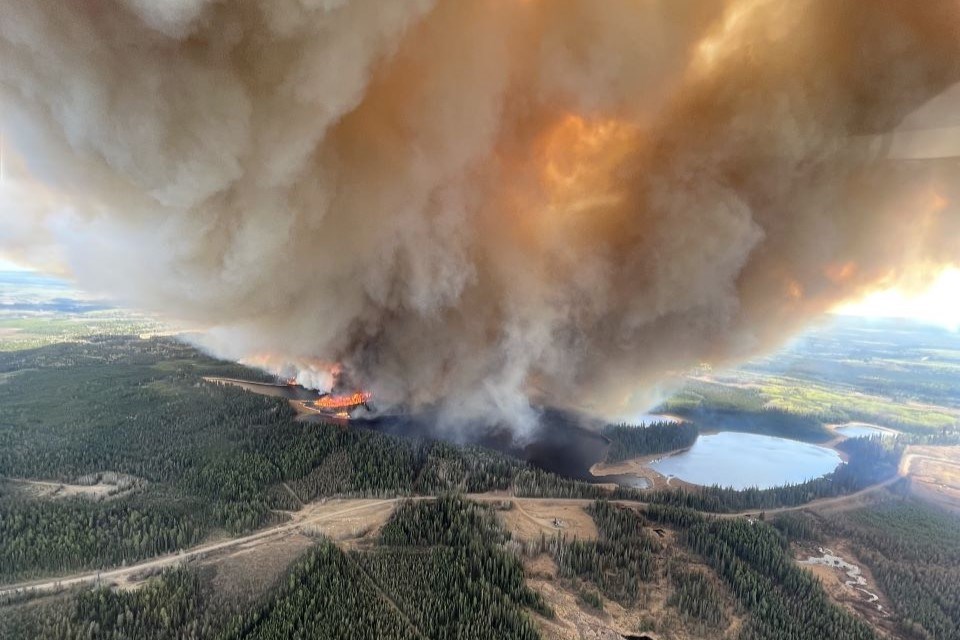Wildfires are having an increased impact on people living near forests and grasslands. In 2023, Canada experienced a wildfire season of unprecedented scale. Wildfires burned an estimated 18.5 million hectares, or one quarter the size of Alberta, and a record 200,000 residents were evacuated. In Alberta, warmer temperatures and droughts are creating conditions for the risk of extreme wildfire events to increase.
With the provincial government declaring an early start to the 2024 wildfire season, Albertans are being encouraged to proactively prepare their properties and communities. Simple actions are available through the FireSmartTM program – an initiative that has its origins in Alberta and is now practised across the country - to protect people and properties. Many can be done over a long weekend, with no special expertise for little cost.
The Intact Centre on Climate Adaptation recently compiled a report of well-tested actions based on FireSmart Canada principles. The practical guidance can help Canadians living in forested and grassland areas reduce their risk of wildfire by up to 75 per cent by updating both building and landscaping materials to 10 metres away from the home.
An estimated 50 to 90 percent of homes destroyed by wildfires are ignited by embers. By completing a series of cost-effective steps, residents can reduce the likelihood that their home and materials surrounding it will ignite.
The report includes easy-to-follow guides with illustrations depicting options for every budget from low-cost maintenance to more complex upgrades. Low-cost options include storing firewood away from the house, and regularly removing leaves and tree needles from roofs, gutters and decks. Burnable material like shrubs and mulch can be removed 1.5 metres away from the house and replaced with material, like river stones, that will not ignite.
Removing needle-bearing trees within 10 metres of the house and using chain link fencing, rather than wood, leading up to the house can also help prevent fire from spreading. According to the Intact Centre report, homeowners can save an estimated $32 for every dollar invested in replacing highly flammable plants like needle-bearing trees with less flammable options such as hardwood trees.
For those planning to make major renovations, consider installing Class A ignition-resistant roof covering in the form of fibre cement, metal or asphalt shingles to limit the threat of embers. According to the Intact Centre report, one dollar invested in replacing fire-vulnerable materials with fire-resistant material can save an estimated $14.
With many people living near grasslands and forests, Albertans have experienced first-hand how a collective approach can help make communities more wildfire resilient. Working with neighbours and the community not only helps reduce the likelihood that fire will spread, it also helps prepare for safe evacuation during a wildfire emergency.
Insurers like Intact are also on the front lines of extreme weather, helping customers get back on track and helping them adapt. They have witnessed the devastating impact on communities and the benefits of being prepared. From 2013 to 2022, Intact alone paid out over $1 billion to customers in Alberta for claims due to severe weather and has invested millions in research to respond to the increasing impacts of extreme weather.
In high-risk communities, grants and rebates are helping to provide support and guidance to make needed upgrades. The Regional Municipality of Wood Buffalo and the Town of Whitecourt used grant funds, provided by Intact Public Entities and Intact Financial Corporation through its Municipal Climate Resiliency Grants, to offer free FireSmart home assessments and financial assistance for upgrades. Combined, the two municipalities completed 672 one-on-one assessments and 64 homeowners received rebates to replace wood shingles and decks with fire-resistant materials, as well as remove fire hazards like trees from their properties. A third grant recipient in Alberta, Lac La Biche County, is also planning to offer a similar rebate program this year so local residents can make needed upgrades.
One way that municipalities are helping their residents prepare for wildfires is by distributing the Intact Centre’s ‘Three Steps to a Cost-Effective FireSmart Home’. A similar outreach program related to flooding in Alberta communities in 2022 found that 70 per cent of homeowners reported having taken two actions once they received the Intact Centre’s three-step flood prevention guide.
Any actions taken today to create wildfire-ready homes will save lives and hardship tomorrow. If wildfire-ready homes do ignite, they sustain lower levels of damage. This means lower repair costs, and less time to restore, allowing people and communities to get back to normal faster. So, what are you doing this weekend?
Three Steps to a Cost-Effective FireSmartTM Home and Three Features of a Wildfire-Ready Community are step-wise guides to upgrade homes and communities to resist wildfire.
Luisa Currie is the senior vice president west with Intact Insurance. Dr. Blair Feltmate is the head of the Intact Centre on Climate Adaptation at the University of Waterloo.




